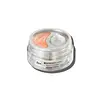What's inside
What's inside
 Key Ingredients
Key Ingredients

 Benefits
Benefits

 Concerns
Concerns

 Ingredients Side-by-side
Ingredients Side-by-side

Water
Skin ConditioningHydroxypropyl Starch Phosphate
Propanediol
SolventBacillus Ferment
Skin ConditioningRetinol
Skin ConditioningMacrocystis Pyrifera Extract
Skin ConditioningChenopodium Quinoa Seed Extract
Skin ConditioningAngelica Archangelica Callus Extract
Skin ProtectingGlycerin
HumectantSorghum Bicolor Stalk Juice
Skin ConditioningAdenosine
Skin ConditioningHydrolyzed Vegetable Protein
Skin ConditioningSodium Polystyrene Sulfonate
Emulsion StabilisingAcrylates/C10-30 Alkyl Acrylate Crosspolymer
Emulsion StabilisingAminomethyl Propanol
BufferingPolysorbate 20
EmulsifyingPropyl Gallate
AntioxidantAllyl Methacrylates Crosspolymer
Emulsion StabilisingPvp
Emulsion StabilisingPhenoxyethanol
PreservativeEthylhexylglycerin
Skin ConditioningPotassium Sorbate
PreservativeSodium Benzoate
MaskingBHT
AntioxidantDisodium EDTA
Citric Acid
BufferingCI 16035
Cosmetic ColorantCI 19140
Cosmetic ColorantWater, Hydroxypropyl Starch Phosphate, Propanediol, Bacillus Ferment, Retinol, Macrocystis Pyrifera Extract, Chenopodium Quinoa Seed Extract, Angelica Archangelica Callus Extract, Glycerin, Sorghum Bicolor Stalk Juice, Adenosine, Hydrolyzed Vegetable Protein, Sodium Polystyrene Sulfonate, Acrylates/C10-30 Alkyl Acrylate Crosspolymer, Aminomethyl Propanol, Polysorbate 20, Propyl Gallate, Allyl Methacrylates Crosspolymer, Pvp, Phenoxyethanol, Ethylhexylglycerin, Potassium Sorbate, Sodium Benzoate, BHT, Disodium EDTA, Citric Acid, CI 16035, CI 19140
Water
Skin ConditioningGlycerin
HumectantLactose
HumectantC12-15 Alkyl Benzoate
AntimicrobialCetearyl Ethylhexanoate
EmollientPEG-100 Stearate
Glyceryl Stearate
EmollientPEG-8
HumectantStearyl Alcohol
EmollientTromethamine
BufferingPanthenol
Skin ConditioningCarbomer
Emulsion StabilisingIsopropyl Myristate
EmollientMethylparaben
PreservativeDisodium EDTA
BHT
AntioxidantPropylparaben
PreservativeMagnesium Aspartate
Skin ConditioningZinc Gluconate
Skin ConditioningChlorhexidine Digluconate
AntimicrobialRetinol
Skin ConditioningPolysorbate 20
EmulsifyingCopper Gluconate
Skin ConditioningWater, Glycerin, Lactose, C12-15 Alkyl Benzoate, Cetearyl Ethylhexanoate, PEG-100 Stearate, Glyceryl Stearate, PEG-8, Stearyl Alcohol, Tromethamine, Panthenol, Carbomer, Isopropyl Myristate, Methylparaben, Disodium EDTA, BHT, Propylparaben, Magnesium Aspartate, Zinc Gluconate, Chlorhexidine Digluconate, Retinol, Polysorbate 20, Copper Gluconate
Ingredients Explained
These ingredients are found in both products.
Ingredients higher up in an ingredient list are typically present in a larger amount.
BHT is a synthetic antioxidant and preservative.
As an antioxidant, it helps your body fight off free-radicals. Free-radicals are molecules that may damage your skin cells.
As a preservative, it is used to stabilize products and prevent them from degrading. Specifically, BHT prevents degradation from oxidation.
The concerns related to BHT come from oral studies; this ingredient is currently allowed for use by both the FDA and EU.
However, it was recently restricted for use in the UK as of April 2024.
Learn more about BHTDisodium EDTA plays a role in making products more stable by aiding other preservatives.
It is a chelating agent, meaning it neutralizes metal ions that may be found in a product.
Disodium EDTA is a salt of edetic acid and is found to be safe in cosmetic ingredients.
Learn more about Disodium EDTAGlycerin is already naturally found in your skin. It helps moisturize and protect your skin.
A study from 2016 found glycerin to be more effective as a humectant than AHAs and hyaluronic acid.
As a humectant, it helps the skin stay hydrated by pulling moisture to your skin. The low molecular weight of glycerin allows it to pull moisture into the deeper layers of your skin.
Hydrated skin improves your skin barrier; Your skin barrier helps protect against irritants and bacteria.
Glycerin has also been found to have antimicrobial and antiviral properties. Due to these properties, glycerin is often used in wound and burn treatments.
In cosmetics, glycerin is usually derived from plants such as soybean or palm. However, it can also be sourced from animals, such as tallow or animal fat.
This ingredient is organic, colorless, odorless, and non-toxic.
Glycerin is the name for this ingredient in American English. British English uses Glycerol/Glycerine.
Learn more about GlycerinPolysorbate 20 is made by combining ethoxylation of sorbitan, ethylene oxide, and lauric acid. It is a mild cleansing agent, surfactant, and emulsifier.
As a surfactant, it helps collect dirt and oils for washing. Emulsifiers prevent oils and water from separating.
Polysorbate 20 also adds scent to a product. Since it is made using sorbitol, it has a sweet scent. Sorbitol can also be found in fruits such as apples and peaches.
The lauric acid used to create Polysorbate 20 is often derived from coconuts.
Polysorbate 20 may not be fungal acne safe.
Learn more about Polysorbate 20Retinol is a gold-standard ingredient for anti-aging. It is a form of Vitamin A and belongs to the class of retinoids that also includes tretinoin.
Why is retinol famous?
It has the most scientific studies backing up its skin benefits out of all the non-prescription ingredients.
Retinol is proven to:
This is why retinol is effective at removing wrinkles, fading dark spots, treating acne, and reducing the appearance of pores.
Studies show retinol is less effective when exposed to UV. Be sure to look for appropriate packaging to keep your retinol potent (similar to Vitamin C).
Using retinol or any retinoids will increase sun-sensitivity in the first few months. Though studies show retinoids increase your skin's natural SPF with continuous use, it is best to always wear sunscreen and sun-protection.
We recommend speaking with a medical professional about using this ingredient during pregnancy.
Retinol may cause irritation in some people, so be sure to patch test. Experts recommend 'ramping up' retinol use: start using this ingredient once a week and work up to using it daily.
Read about Tretinoin
Learn more about RetinolWater. It's the most common cosmetic ingredient of all. You'll usually see it at the top of ingredient lists, meaning that it makes up the largest part of the product.
So why is it so popular? Water most often acts as a solvent - this means that it helps dissolve other ingredients into the formulation.
You'll also recognize water as that liquid we all need to stay alive. If you see this, drink a glass of water. Stay hydrated!
Learn more about Water